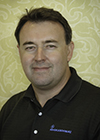2017 Technical Webinar
The Future of EMC Test Laboratory Emissions Measurement Capability
Overview:
Test Laboratories measure customer product spectral emissions and determine pass/fail based on the specification. Customers are provided pass/fail status and in the event of a failure, are typically provided with a plot of the failing spectrum consisting of a max hold trace. Often the max hold trace data provides little diagnostic information necessary to troubleshoot the failing emission and customers are starting to demand more useful information. Test Laboratories are starting to invest in technology that provides their customers with invaluable diagnostic capability and speed of iterative testing to maximize their customer’s success in product certification.
Q&A
The following questions were asked during the live presentation. Click each question to view its answer.
What dwell time do you recommend for automated TILE software using older R&S ESCS Receivers? 1ms or 20ms?
The necessary dwell time is related only to the emissions being characterized, it has nothing to do with the test hardware or software. I recommend time domain scan with a longer dwell time to provide a higher level of confidence all the spectrum is properly captured.
I'm not understanding how two sources of emissions at the same frequency and at the same time can be distinguished. Can you point me to any good white papers on the subject?
There are numerous white papers on our website, here is a link to one of them.
How do you set dwell time with QP and AVG detectors, if the maximal emission only happens lets say, every 2 hours?
Trying to measure the maximum emission is typically done with a peak detector, not an avg or QP detector. The complexity of determining the dwell time for signals with that long a repetition rate is best handled by on-site discussion. I recommend you contact your local R&S support.
Does the receiver go up to 25GHz or higher?
The ESW family has a 44GHz version, and now supports external mixers for operation up to and above 200GHz.


